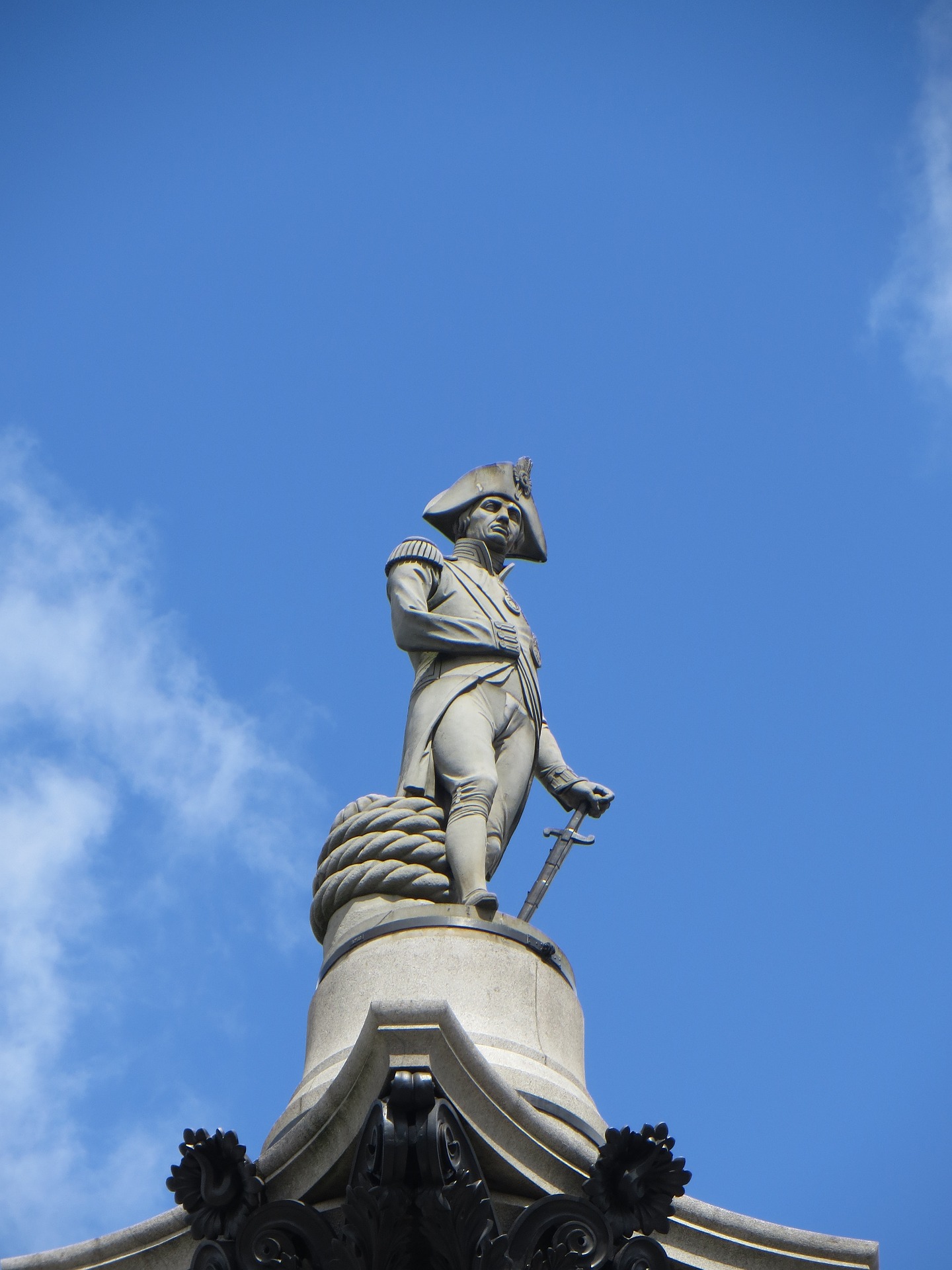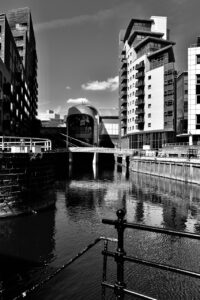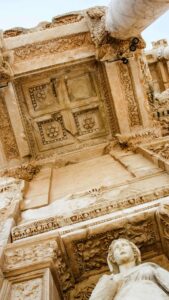London, a city steeped in history, art, and culture, is adorned with a plethora of monumental statues that stand as timeless tributes to its rich heritage. For travelers seeking to immerse themselves in the grandeur and significance of these iconic landmarks, embarking on a journey through central London’s streets offers an unparalleled opportunity to explore the city’s past while marveling at its artistic treasures.
As you venture through the bustling thoroughfares and serene parks of central London, you’ll encounter statues that span centuries and continents, each telling a unique story of triumph, sacrifice, and cultural exchange. From the majestic Nelson’s Column in Trafalgar Square to the serene Queen Victoria statue in Kensington Gardens, these monuments serve as poignant reminders of the individuals and events that have shaped the course of history.
Embarking on an Artistic Odyssey:
Your journey begins amidst the grandeur of Trafalgar Square, where Nelson’s Column looms tall, honoring the valiant Admiral Horatio Nelson and his pivotal role in securing Britain’s naval supremacy. From there, you’ll traverse the vibrant streets of Piccadilly Circus, where the Statue of Eros stands as a symbol of love and philanthropy, a testament to the enduring legacy of Lord Shaftesbury.
Exploring Political Legacies:
Continuing your exploration, you’ll find yourself in the hallowed precincts of Parliament Square, where statues of towering figures like Winston Churchill and Abraham Lincoln stand as guardians of democracy and freedom. These statues, with their stoic visages and outstretched hands, serve as enduring reminders of the values that unite nations and inspire generations.
Communing with Royalty:
Venturing into the verdant oasis of Kensington Gardens, you’ll encounter the regal figure of Queen Victoria, immortalized in stone as a symbol of enduring strength and grace. Nearby, the Albert Memorial stands as a testament to the enduring love between Queen Victoria and Prince Albert, its intricate design and opulent beauty capturing the spirit of the Victorian era.
Reflecting on Historical Significance:
As you traverse the streets of central London, you’ll find yourself immersed in the stories of kings and queens, statesmen and visionaries, whose legacies continue to resonate through the centuries. From the solemn Cenotaph in Whitehall to the resplendent Statue of George Washington outside the National Gallery, each monument offers a window into the past and a glimpse of the ideals that have shaped the world we inhabit today.
Embracing Cultural Exchange:
Throughout your journey, you’ll also encounter statues that speak to the enduring bonds of friendship and cooperation between nations. The Statue of Charles I in Trafalgar Square, a gift from the people of New Zealand, stands as a symbol of unity and shared history, while the Statue of Oliver Cromwell outside the Houses of Parliament serves as a reminder of the enduring ties between Britain and the Commonwealth.
Practical Tips for Explorers:
As you embark on your adventure through central London, remember to wear comfortable shoes and dress for the weather, as you’ll be traversing a variety of landscapes and environments. Consider starting your journey early in the day to avoid crowds and maximize your time exploring these magnificent monuments. And don’t forget to bring a camera to capture the awe-inspiring beauty of these iconic landmarks.
Here, we explore the top 10 monumental statues in central London, each with its own unique story and significance, making them must-visit landmarks on any vacation tour.
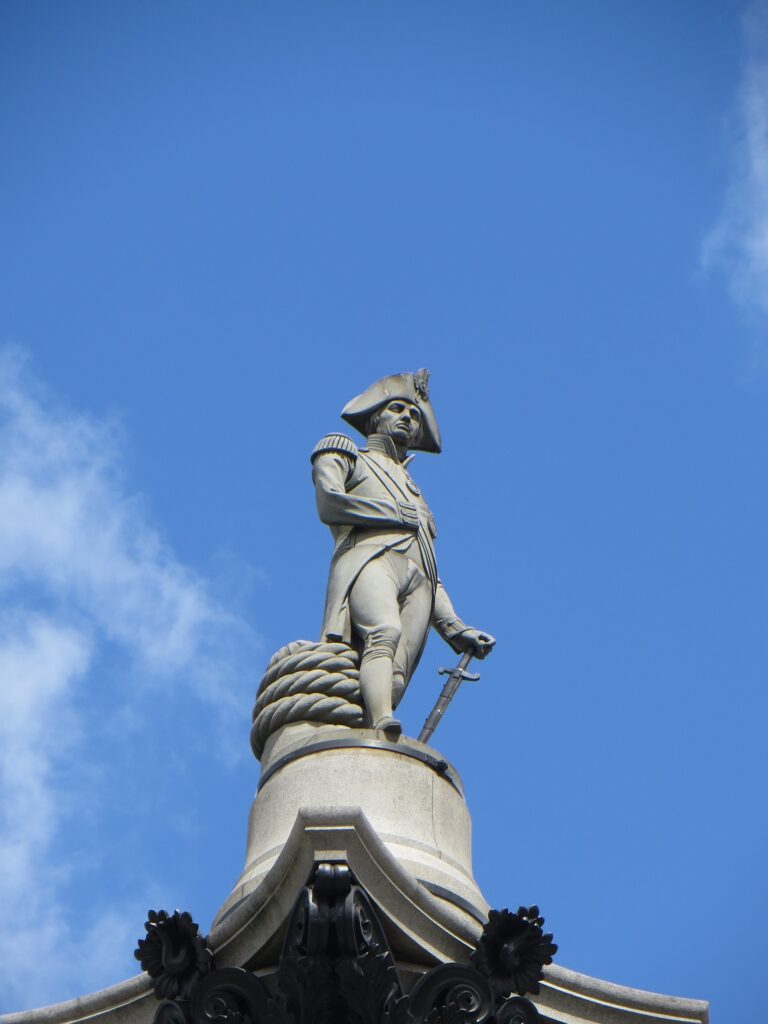
1. Nelson’s Column
Location: Trafalgar Square
Description:
Nelson’s Column is perhaps the most iconic statue in London. Erected in 1843, it commemorates Admiral Horatio Nelson, who died at the Battle of Trafalgar in 1805. Standing 52 meters high, the column is topped by a statue of Nelson gazing towards the Thames.
Historical Significance:
Admiral Nelson is celebrated for his naval victories against Napoleonic France, which were crucial in establishing British naval dominance. His leadership and bravery made him a national hero, and Nelson’s Column stands as a testament to his legacy.
Tourist Tips:
Trafalgar Square is a bustling hub and a great starting point for exploring central London. The area is pedestrian-friendly, with plenty of benches for rest and photo opportunities. The National Gallery is also located here, making it convenient to combine your visit with a tour of this world-class museum.
2. The Statue of Eros
Location: Piccadilly Circus
Description:
The Statue of Eros, officially known as the Shaftesbury Memorial Fountain, was erected in 1893 to honor Lord Shaftesbury, a philanthropist renowned for his social reforms. The statue is actually Anteros, the god of selfless love, but it is popularly known as Eros.
Historical Significance:
Lord Shaftesbury’s contributions to improving the lives of the working class and his advocacy for children’s welfare are immortalized through this statue. Its location in Piccadilly Circus, a vibrant entertainment and shopping district, symbolizes the intersection of culture and history.
Tourist Tips:
Piccadilly Circus is an excellent spot for people-watching and enjoying the energy of London’s nightlife. Nearby attractions include the theatres of the West End, Regent Street for shopping, and Leicester Square.
3. The Statue of Winston Churchill
Location: Parliament Square
Description:
Unveiled in 1973, the statue of Winston Churchill stands prominently in Parliament Square. Created by sculptor Ivor Roberts-Jones, it portrays Churchill in a characteristic pose, looking towards the Houses of Parliament.
Historical Significance:
Winston Churchill, the British Prime Minister during World War II, is celebrated for his leadership and oratory that inspired the nation during its darkest hours. The statue commemorates his significant role in British and world history.
Tourist Tips:
Parliament Square is surrounded by other notable statues, including those of Abraham Lincoln and Nelson Mandela. It’s also close to iconic landmarks such as the Houses of Parliament, Big Ben, and Westminster Abbey.
4. The Statue of Queen Victoria
Location: Kensington Gardens
Description:
This statue of Queen Victoria, unveiled in 1893, is located in the picturesque setting of Kensington Gardens, outside Kensington Palace. Sculpted by her daughter Princess Louise, it presents a majestic image of the long-reigning queen.
Historical Significance:
Queen Victoria’s reign, known as the Victorian era, was marked by industrial, cultural, political, scientific, and military change within the United Kingdom, and was a period of great expansion of the British Empire.
Tourist Tips:
Kensington Gardens is a tranquil retreat in central London, perfect for a leisurely stroll. The palace itself is a major attraction, offering tours of its state rooms and exhibits about its royal inhabitants. Nearby, you can also visit the Albert Memorial and the Serpentine Gallery.
5. The Cenotaph
Location: Whitehall
Description:
The Cenotaph, meaning “empty tomb,” is a war memorial situated in Whitehall. Originally erected in 1919 as a temporary structure for a peace parade, it was later replaced with a permanent Portland stone version in 1920.
Historical Significance:
The Cenotaph commemorates British and Commonwealth military personnel who died in the two World Wars and later conflicts. It is the focal point of the annual Remembrance Sunday service, attended by the royal family and political leaders.
Tourist Tips:
Whitehall is the heart of the British government, close to Downing Street and the Ministry of Defence. Visitors can also explore the nearby Churchill War Rooms, a museum dedicated to Winston Churchill’s wartime bunker.
6. The Statue of Charles I
Location: Trafalgar Square
Description:
The statue of Charles I, erected in 1675, stands at the southern end of Trafalgar Square. Sculpted by Hubert Le Sueur, it depicts the king on horseback and is the oldest equestrian statue in London.
Historical Significance:
Charles I was the monarch who was executed after the English Civil War, leading to a brief republican period under Oliver Cromwell. His statue was hidden during the Commonwealth period and restored after the monarchy was reestablished.
Tourist Tips:
Situated near Nelson’s Column and the National Gallery, this statue is in a prime location for exploring Trafalgar Square. It’s also close to the Strand and the theaters of Covent Garden.
7. The Statue of Oliver Cromwell
Location: Outside the Houses of Parliament
Description:
Erected in 1899, the statue of Oliver Cromwell stands outside the Houses of Parliament. Created by Hamo Thornycroft, it depicts Cromwell holding a sword and a Bible.
Historical Significance:
Oliver Cromwell was a key figure in the English Civil War and served as Lord Protector during the Commonwealth of England. His legacy is controversial; he is both praised as a champion of liberty and criticized for his role in the conquest of Ireland.
Tourist Tips:
Located in Westminster, this statue is part of a broader exploration of the area’s political history. Nearby attractions include the Houses of Parliament, Westminster Abbey, and the Jewel Tower.
8. The Statue of Abraham Lincoln
Location: Parliament Square
Description:
A replica of Augustus Saint-Gaudens’ statue in Chicago, this statue of Abraham Lincoln was unveiled in Parliament Square in 1920. It commemorates the American president who led the United States through the Civil War.
Historical Significance:
Lincoln’s leadership during the Civil War and his efforts to abolish slavery have made him a global symbol of freedom and democracy. The statue signifies the strong historical ties between the UK and the USA.
Tourist Tips:
Parliament Square is a great spot for history enthusiasts, featuring statues of significant figures from various nations. The square is also a short walk from the River Thames and the South Bank.
9. The Albert Memorial
Location: Kensington Gardens
Description:
The Albert Memorial, unveiled in 1872, is one of London’s most elaborate monuments. Commissioned by Queen Victoria in memory of her husband Prince Albert, it stands in Kensington Gardens opposite the Royal Albert Hall.
Historical Significance:
Prince Albert, the consort of Queen Victoria, was instrumental in promoting the arts, science, and industry. The memorial reflects the Victorian era’s grandiosity and commemorates Albert’s contributions to British society.
Tourist Tips:
The Albert Memorial is an architectural marvel worth visiting. Kensington Gardens provides a serene setting, perfect for a leisurely walk. Nearby, you can visit the Science Museum, the Natural History Museum, and the Victoria and Albert Museum.
10. The Statue of George Washington
Location: Outside the National Gallery
Description:
A gift from the Commonwealth of Virginia, the statue of George Washington was erected outside the National Gallery in 1921. This bronze statue is a replica of Jean-Antoine Houdon’s original in Richmond, Virginia.
Historical Significance:
George Washington, the first President of the United States and a leading figure in the American Revolution, symbolizes independence and democratic governance. The statue’s presence in London highlights the historical ties and shared values between the UK and the USA.
Tourist Tips:
Located in Trafalgar Square, this statue is surrounded by other significant landmarks and is an excellent starting point for a tour of central London. The National Gallery itself offers an extensive collection of Western European paintings, making it a must-visit for art lovers.
Conclusion
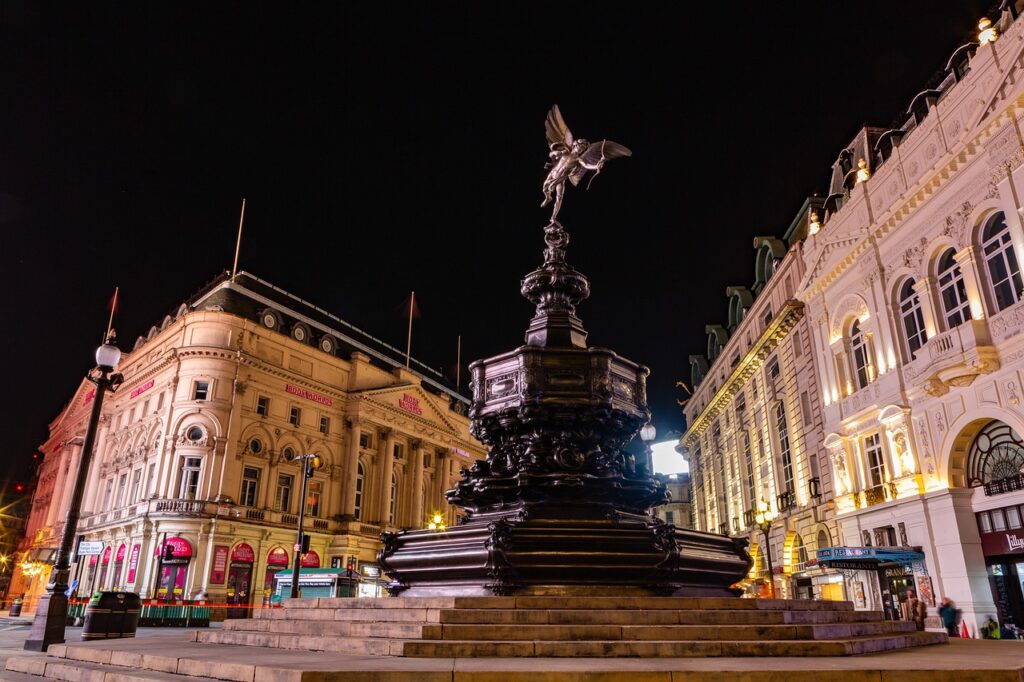
Exploring the monumental statues of central London offers a captivating journey through the city’s rich tapestry of history, art, and culture. These statues are not merely decorative elements but are imbued with stories of leadership, heroism, and significant events that have shaped London and the wider world.
An Immersive Experience:
Walking through central London to visit these statues provides an immersive experience where history comes alive. From the commanding presence of Nelson’s Column in Trafalgar Square to the poignant Cenotaph in Whitehall, each statue offers a unique glimpse into the past. Visitors can feel the weight of history and the enduring legacy of the figures commemorated.
Architectural Marvels:
The statues themselves are architectural marvels, showcasing the craftsmanship and artistic vision of their creators. The intricate details of the Albert Memorial, the dynamic energy of the Eros statue, and the solemnity of the Winston Churchill statue all reflect the diversity of styles and periods that have contributed to London’s urban landscape.
Strategic Locations:
Many of these statues are strategically located near other major attractions, making it convenient for tourists to plan their visits. For example, after admiring the statue of Queen Victoria in Kensington Gardens, one can easily explore Kensington Palace.
After admiring the statue of Queen Victoria in Kensington Gardens, one can easily explore Kensington Palace, the former residence of Queen Victoria and Prince Albert. This magnificent palace offers visitors the chance to step back in time and explore the opulent state rooms, lavish gardens, and intriguing exhibitions that shed light on the lives of the royal residents.
Additionally, nearby Hyde Park provides a tranquil retreat where visitors can relax amidst lush greenery, take a leisurely boat ride on the Serpentine lake, or enjoy a traditional English afternoon tea at one of the park’s charming cafes. With its proximity to other major attractions such as the Royal Albert Hall and the Natural History Museum, Kensington Gardens serves as an ideal starting point for a day of exploration in central London.

